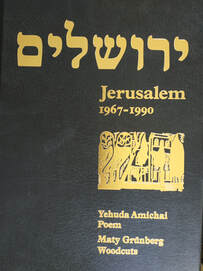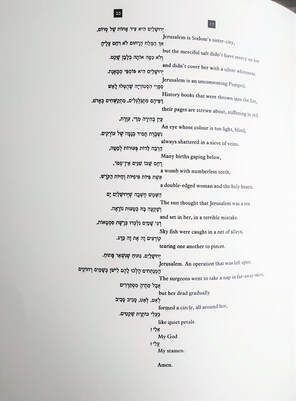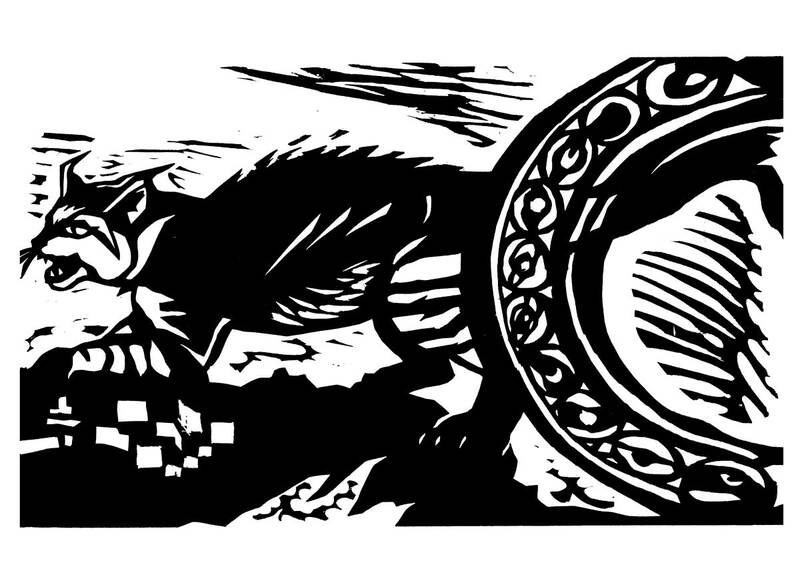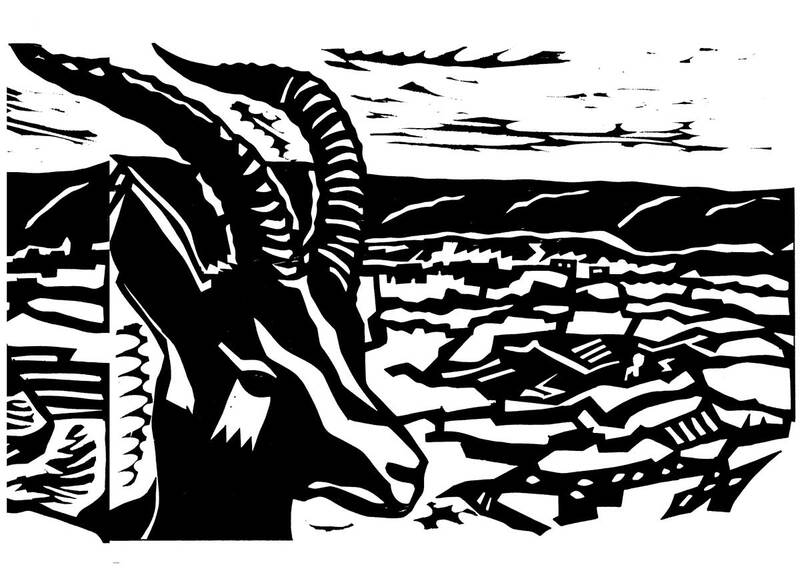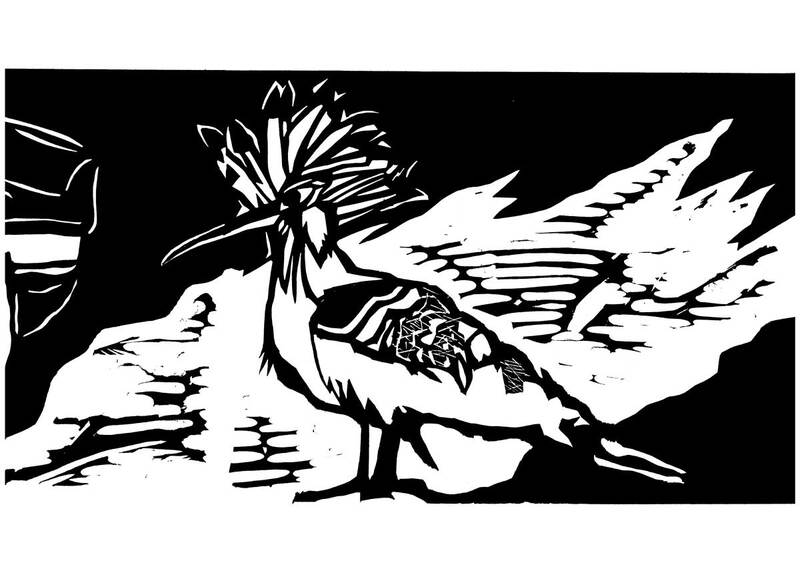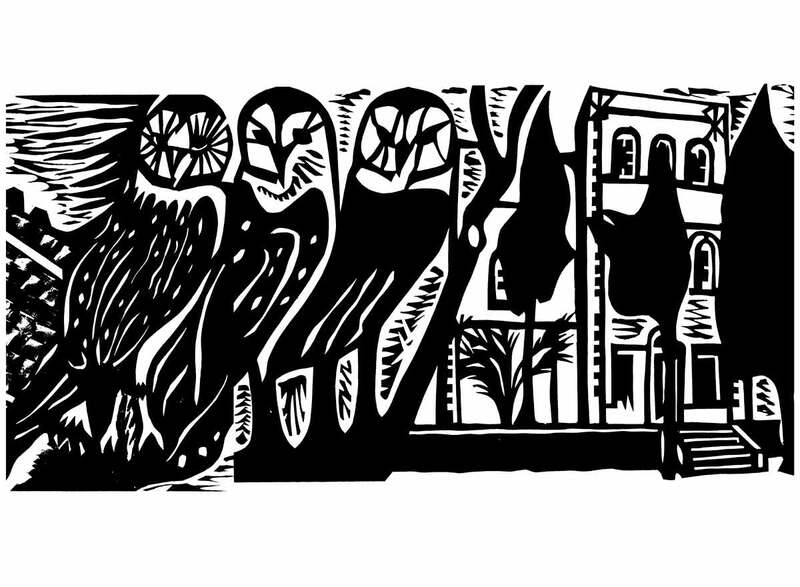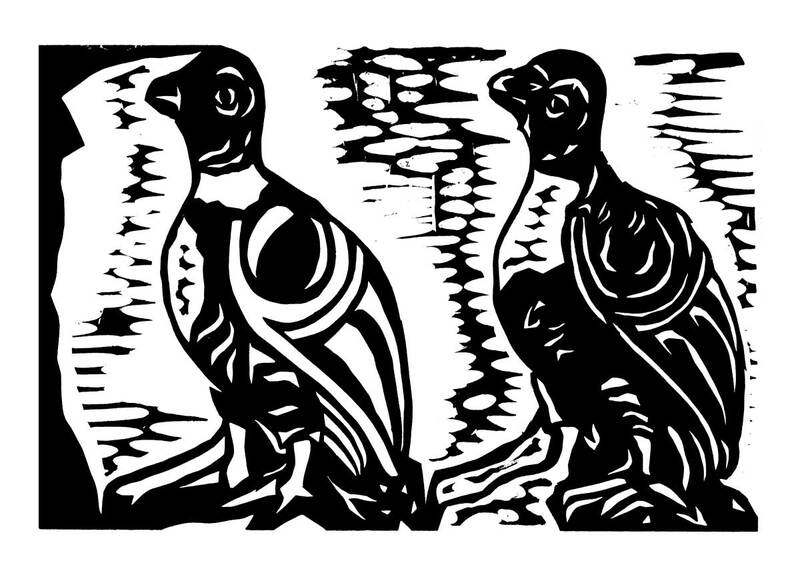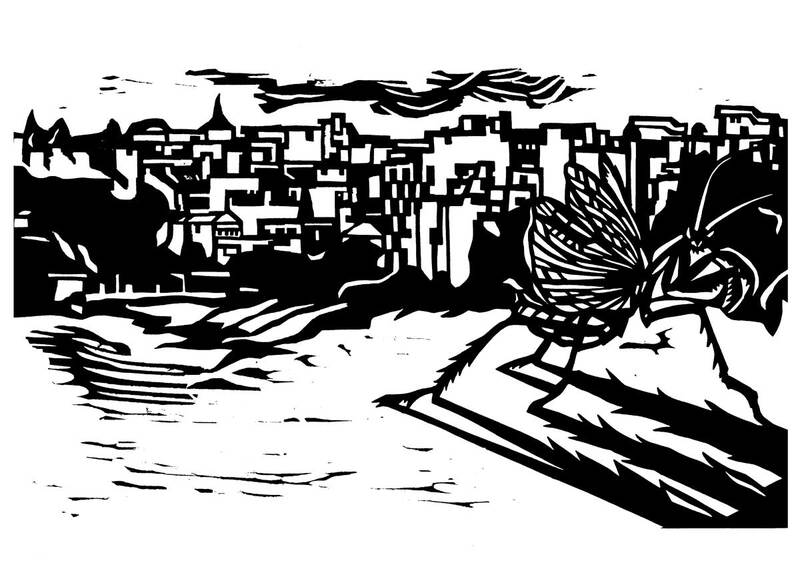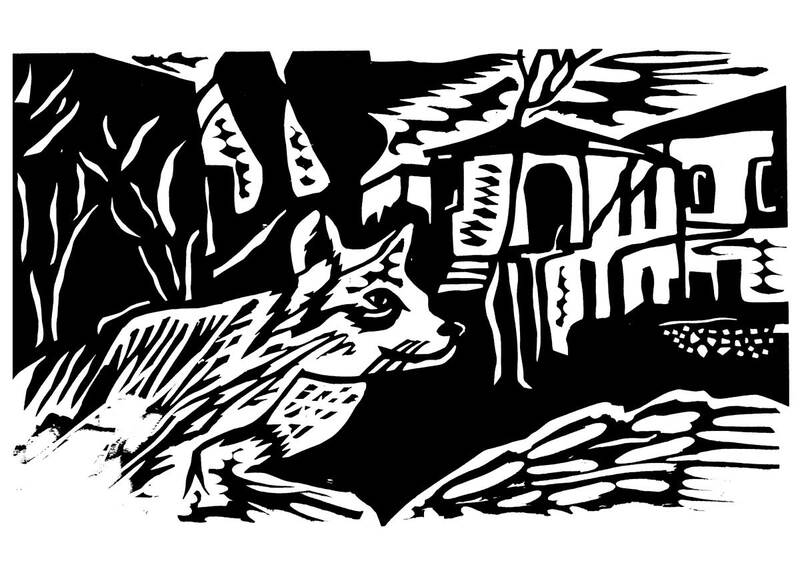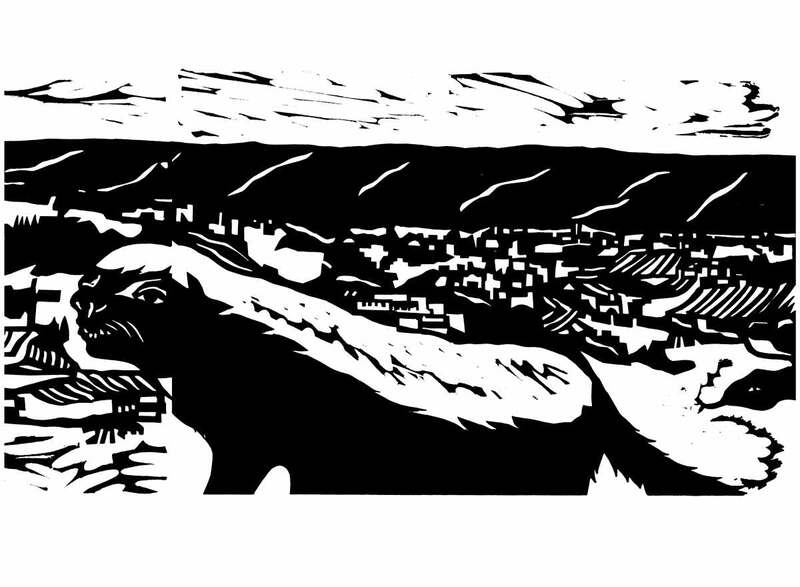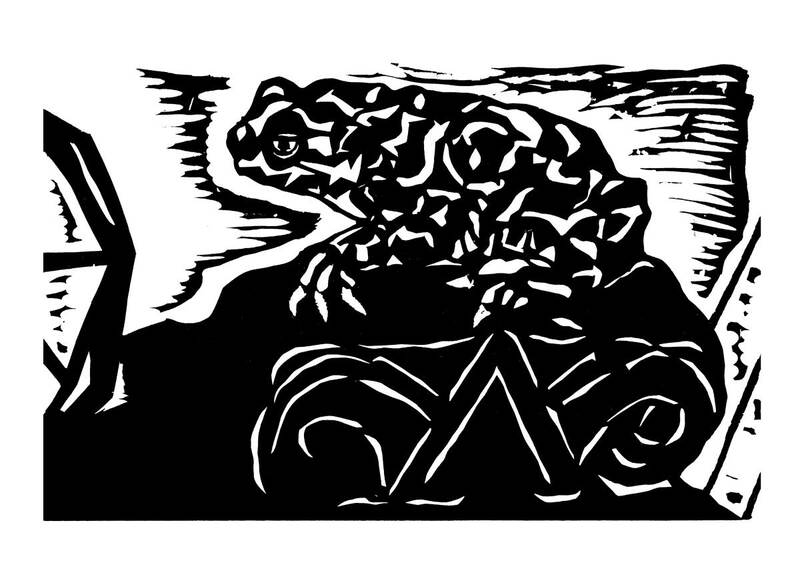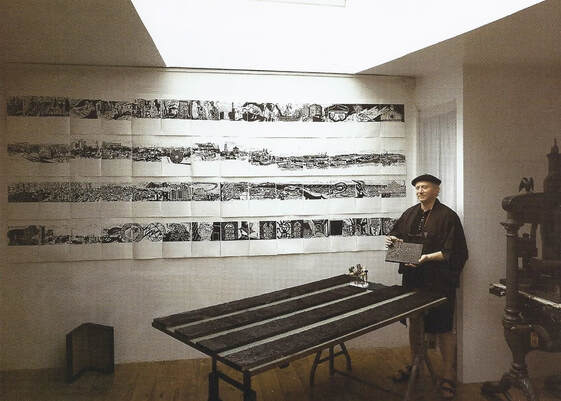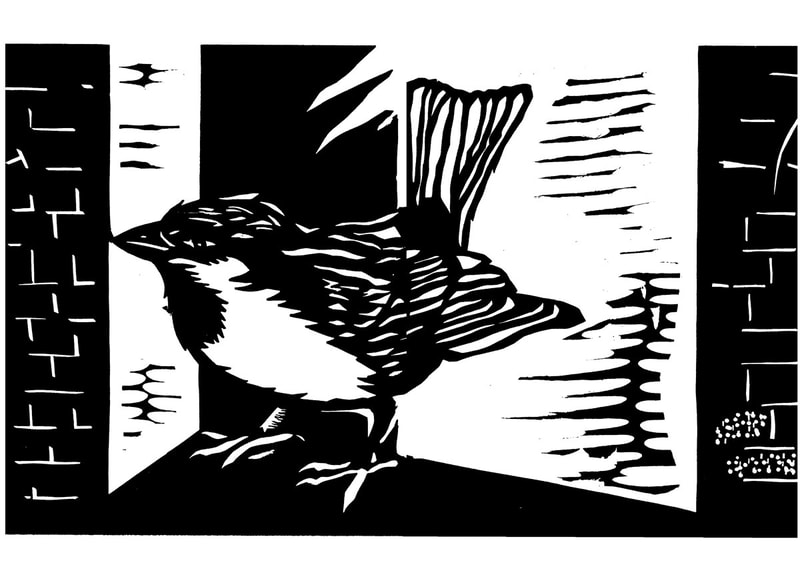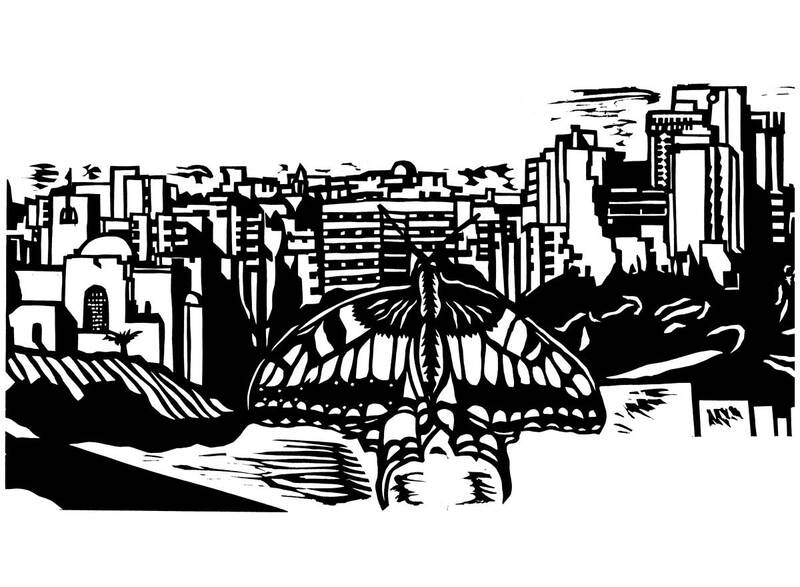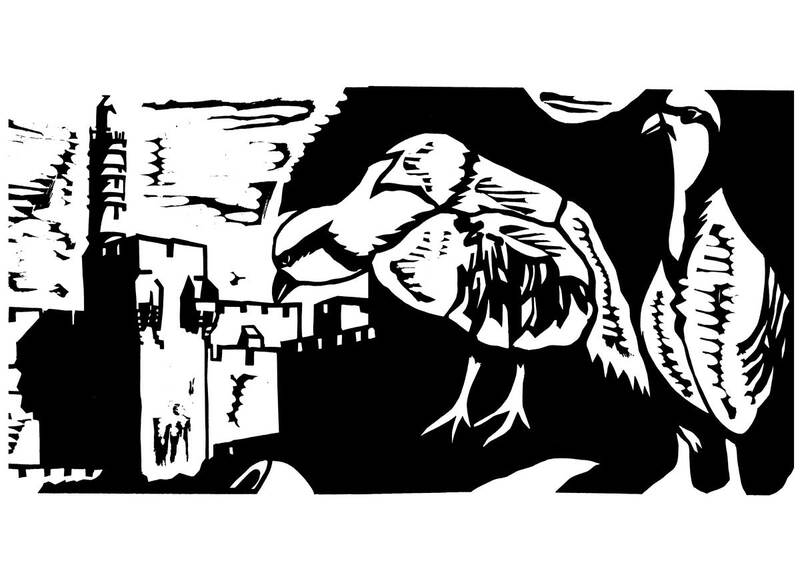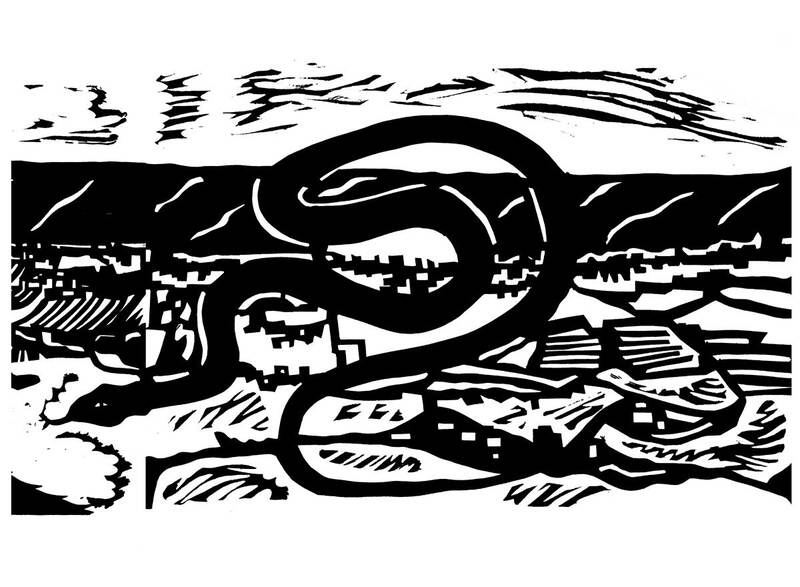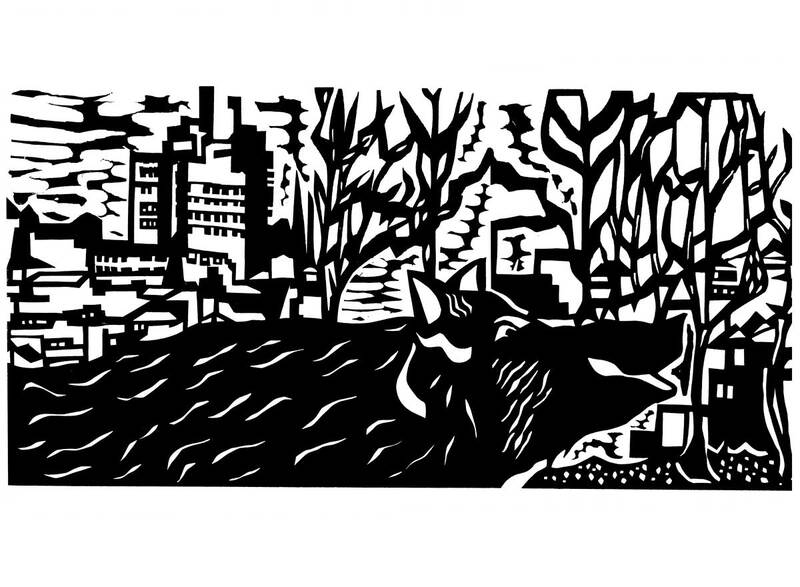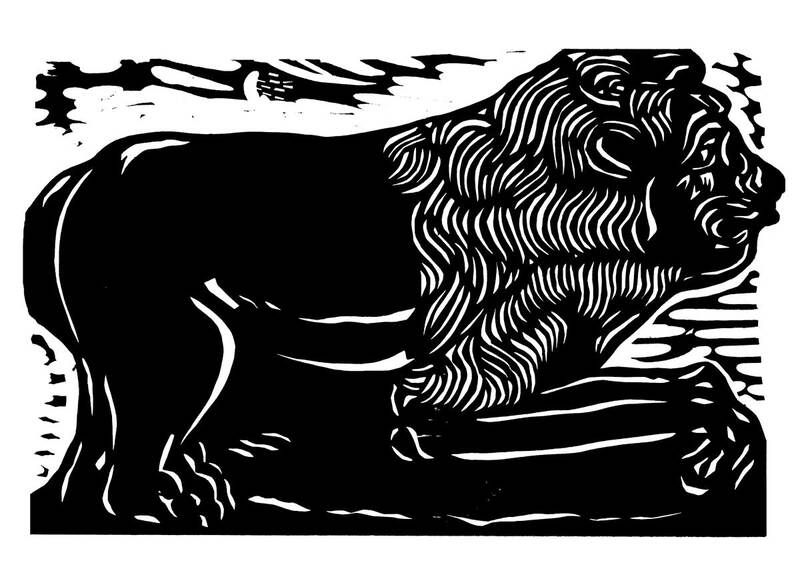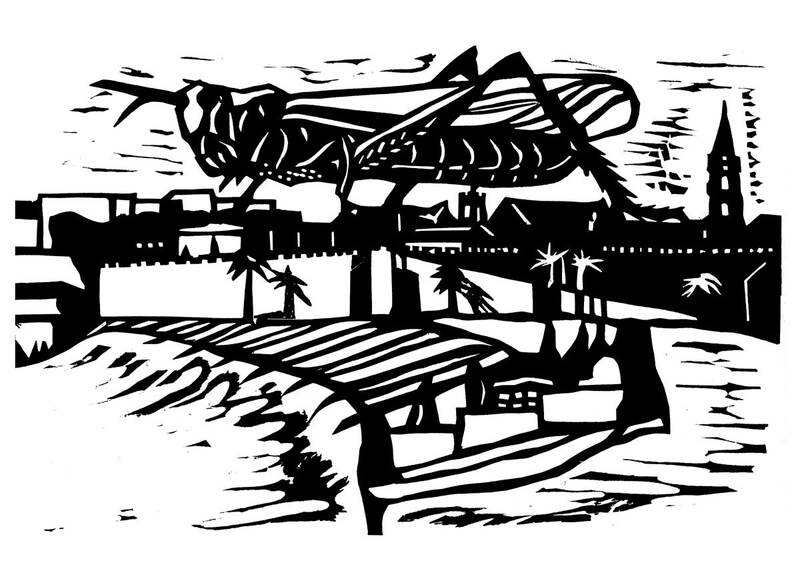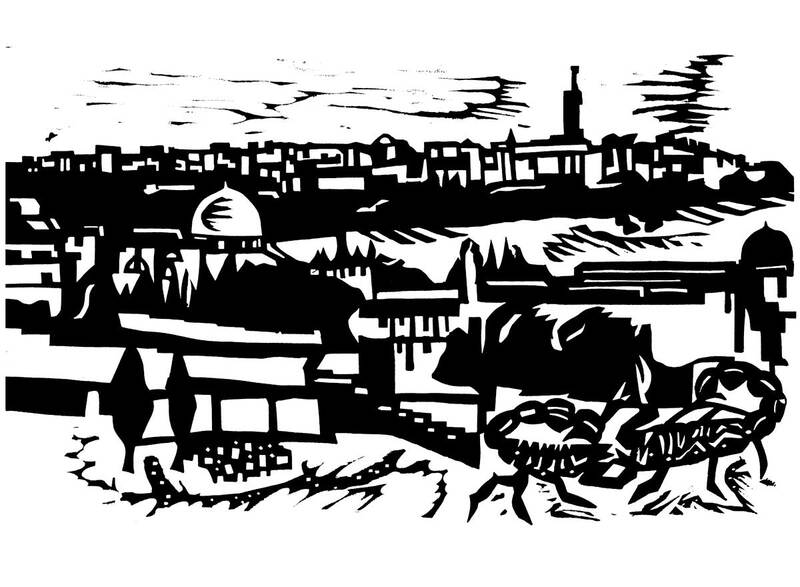22.5.2020
Jerusalem Day
Jerusalem 1967-1990 / Artist Portfolio / Yehuda Amichai / Maty Grunberg
When Maty Grunberg was a student at Bezalel Art School he already knew he would one day create work on Jerusalem. On one of his visits to Israel, in the late 1980s, he traveled to Jerusalem and, as usual, photographed several places there. He returned to London and began looking for a concept to guide his work. He was drawn to the special strengths of this special city. In the initial exploration phase, he made abstract sketches of Jerusalem landscape.
At the time, *Ron and Tula Pundak, who lived nearby, entered Maty's studio. A friendship has been established between them. Ron and Tula were enthusiastic about the abstract sketches and encouraged Maty to continue. But he was not satisfied with the abstractness that did not express the uniqueness of Jerusalem.
He recalled that the "Bezalel Haggadah" he created (1984, New York) – he included wildlife in Jerusalem. He went for a visit at the "Museum of Nature" in Jerusalem, where he met with the director Dr. Moshe Tsurnmal, who lit his eyes as to the special characteristics of the animals in Jerusalem, arising from the location of the city between the desert and the lowlands. Tsurnmal used the phrase - "the predators and their prey". The phrase captured Maty G.'s imagination. At that moment, the idea leading the artist portfolio was formed and crystalized – wildlife confrontation in Jerusalem.
He then met with a group of supporters who willingly sponsored the project. The first were Joan and *Richard Scheuer, and Susan and Martin Sanders, who, in the past, have supported his artwork for years. Maty returned to Jerusalem for a two-month stay at Mishkenot Sha'ananim, which was then a small place, not at all like the spiritual sanctuary it is today. Maty G. took with him to Jerusalem the minimal and most powerful tool an artist has - a pencil.
He had the visual idea of the artist portfolio he was about to create, but he had no text. Over the years Maty created over 30 artist books, all of them were accompanied by texts written by the best writers. Now, he searched for text. While wandering around in bookstores, he encountered a poem written by the Israeli renowned poet Yehuda Amichai, who wrote this poem immediately after the city's 1967 occupation - "Jerusalem 1967". Amichai was not caught up in the euphoria that prevailed in the country, and wrote a poem that Maty saw as a harsh prophecy that is valid up to these days. The poem seized Maty. He contacted Yehuda Amichai who lived in the "Yemin Moshe" neighborhood, near Mishkenot Sha'ananim.
Amichai trusted his hands on the project.
The artists Avraham Ofek, Jacob Pines and Aryeh Azene, who lived in the city and knew it well, showed him their favorite places, their "hidden" places. Every night, he met Amichai and shared with him the day's sketches and impressions. Amichai was enthusiastic and wanted to write a new poem especially for the drawings. But Maty did not want people to say he illustrated Yehuda Amichai's poem. He sought to put side by side his visual work with Yehuda Amichai's text.
The poem was translated into English by one of England's greatest poets - Stephen Michelle. The poem was printed in Hebrew and English. The encounter between the two languages, printed line by line, creates a special reading experience as the English translation has more words than the Hebrew source.
Amichai trusted his hands on the project.
The artists Avraham Ofek, Jacob Pines and Aryeh Azene, who lived in the city and knew it well, showed him their favorite places, their "hidden" places. Every night, he met Amichai and shared with him the day's sketches and impressions. Amichai was enthusiastic and wanted to write a new poem especially for the drawings. But Maty did not want people to say he illustrated Yehuda Amichai's poem. He sought to put side by side his visual work with Yehuda Amichai's text.
The poem was translated into English by one of England's greatest poets - Stephen Michelle. The poem was printed in Hebrew and English. The encounter between the two languages, printed line by line, creates a special reading experience as the English translation has more words than the Hebrew source.
Maty chose the technique of figurative woodcuts to carry out the work. The woodcuts fierce character, on a white paper with only black ink, would reflect well the nature of the city.
Humans are absent from the woodcuts. The conflict is represented by the animals that are a kind of fable to the survivors throughout the city's ongoing history - the predators and their prey. Wolf or Jackal on the roof of a house. Three preying birds against the "Bezalel" building, a large black snake crawling toward mongoose against a nightly panorama of the city, a deer head against the cityscape, a preying mantis attacking a butterfly against the urban landscape of West Jerusalem, a poison grasshopper, Jerusalem partridge against the Tower of David, and more. The artist's decision to exclude human beings from his work skips the pothole of a local political work and makes it a universal, valid anywhere and at any time.
In 1990, the creation of eight woodcut sequences ended, each containing seven images, a total of 56 woodcuts. The Friends of Bezalel Society in New York published the artist's portfolio "Jerusalem 1967-90". The entire edition was sold. An exhibition based on the artist's portfolio was presented in New York, London and Jerusalem.
Maty G. wrote: "To observe Jerusalem is to be caught in an intricate puzzle. Its landscape is a complex vision of many meanings, which provide an endless kaleidoscope of further meanings – a mosaic of time… My visual encounter with Jerusalem took place where the sky shimmers on the earth – on the line of its horizon. The horizon inspired my black and white woodcuts. It is the animals that inhabit the air and earth in and around Jerusalem that have survived throughout its eras – a continuous lifetime throughout its long history.
The confrontation in Jerusalem…has caused a perpetual conflict between the indigenous predators and their prey. This conflict is the focus of my work".
The confrontation in Jerusalem…has caused a perpetual conflict between the indigenous predators and their prey. This conflict is the focus of my work".
Susan Goodman, today Senior Curator Emerita, The Jewish Museum, New York wrote back then: "…Maty Grunberg is an artist who has his own unique vision of the city. It belongs to his personal mythology and symbol system. For Grunberg, the landscape of Jerusalem is an inseparable part of the complexity of his physical, spiritual and sensual existence.
'Jerusalem as a theme' by Grunberg represents the essence of a given visual environment. The details of reality are reduced in his woodcuts by means of a tight system, composed of a plethora of forms organized on a surface where depth is integrated with shadow…"
Dalia Manor, a curator and a critic, wrote: "… When a contemporary artist approaches the subject of Jerusalem he risks, I think, sliding into a trap of sentimental stereotypes and kitsch, which forms an inseparable part of Jerusalem cliché'. In this respect, Jerusalem – like other enchanted places – challenges the modern artist. Israeli artists have never avoided a confrontation either with the city or with the idea, whether approaching it with awe, as the works of Anna Ticho or Avigdor Stemtsky, or with a special view of local myths as manifested in the work of Joshua Neustein and Menashe Kadishman. Jerusalem has had an enduring presence in Israeli art since the establishment of the Bezalel Academy ,in 1906. The work of Maty Grunberg, a series of woodcut prints, joins the long, diverse and ongoing tradition of the theme of Jerusalem in Israeli art…"
'Jerusalem as a theme' by Grunberg represents the essence of a given visual environment. The details of reality are reduced in his woodcuts by means of a tight system, composed of a plethora of forms organized on a surface where depth is integrated with shadow…"
Dalia Manor, a curator and a critic, wrote: "… When a contemporary artist approaches the subject of Jerusalem he risks, I think, sliding into a trap of sentimental stereotypes and kitsch, which forms an inseparable part of Jerusalem cliché'. In this respect, Jerusalem – like other enchanted places – challenges the modern artist. Israeli artists have never avoided a confrontation either with the city or with the idea, whether approaching it with awe, as the works of Anna Ticho or Avigdor Stemtsky, or with a special view of local myths as manifested in the work of Joshua Neustein and Menashe Kadishman. Jerusalem has had an enduring presence in Israeli art since the establishment of the Bezalel Academy ,in 1906. The work of Maty Grunberg, a series of woodcut prints, joins the long, diverse and ongoing tradition of the theme of Jerusalem in Israeli art…"
Second house in the poem "Jerusalem 1967" by Yehuda Amichai:
I've come back to this city where names
are given to distances as if to human beings
and the numbers are not of bus-routs
but: 70 After, 1917, 500
B.C., Forty-Eight. These are the lines
you really travel on.
And already the demons of the past are meeting
with the demons of the future and negotiating about me
above me, their give-and-take neither giving nor taking
in the high arche of shell-orbits above my head.
A man who comes back to Jerusalem is aware that the places
that used to hurt don't hurt any more.
But a light of warning remains in everything,
like the movement of a light veil: warning.
I've come back to this city where names
are given to distances as if to human beings
and the numbers are not of bus-routs
but: 70 After, 1917, 500
B.C., Forty-Eight. These are the lines
you really travel on.
And already the demons of the past are meeting
with the demons of the future and negotiating about me
above me, their give-and-take neither giving nor taking
in the high arche of shell-orbits above my head.
A man who comes back to Jerusalem is aware that the places
that used to hurt don't hurt any more.
But a light of warning remains in everything,
like the movement of a light veil: warning.
Project page of Maty's web:
http://www.matygrunberg.com/wildlife-confrontation-in-jerusalem.html
A short firm – Project Jerusalem, Director – Jack Pizzey. https://youtu.be/so2B45o3WRc
* Ron Pundak was later one of the planners of the Oslo Accords, serving as CEO of the Peres Center for Peace from 2001 to 2012, the year he passed away.
* Richard Scheuer was a dear friend of Maty and a great supporter of his artwork for thirty years. He passed away in 2008.
Written and edited by Naomi R. Azar
http://www.matygrunberg.com/wildlife-confrontation-in-jerusalem.html
A short firm – Project Jerusalem, Director – Jack Pizzey. https://youtu.be/so2B45o3WRc
* Ron Pundak was later one of the planners of the Oslo Accords, serving as CEO of the Peres Center for Peace from 2001 to 2012, the year he passed away.
* Richard Scheuer was a dear friend of Maty and a great supporter of his artwork for thirty years. He passed away in 2008.
Written and edited by Naomi R. Azar

